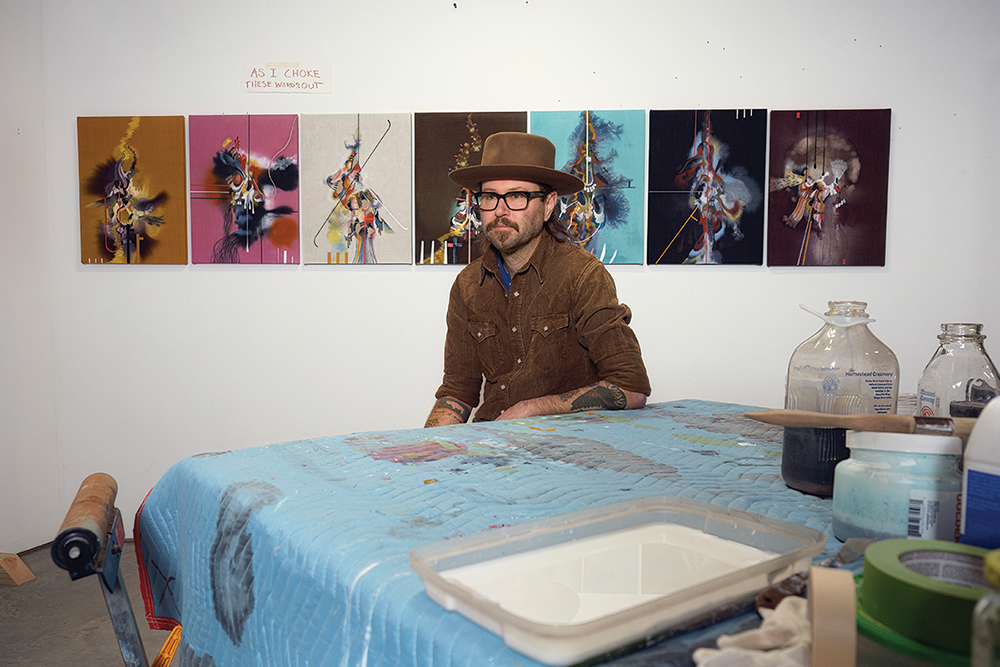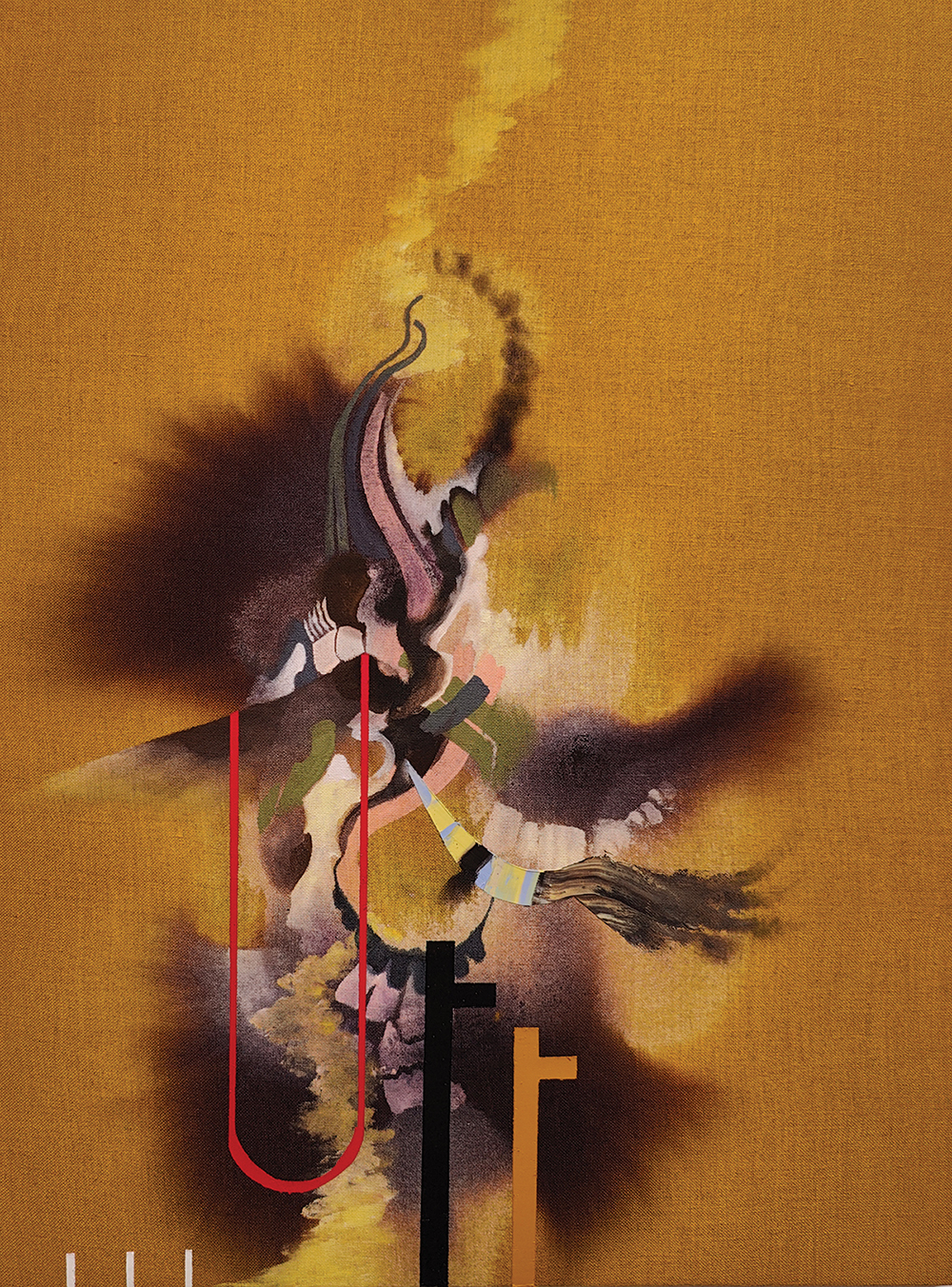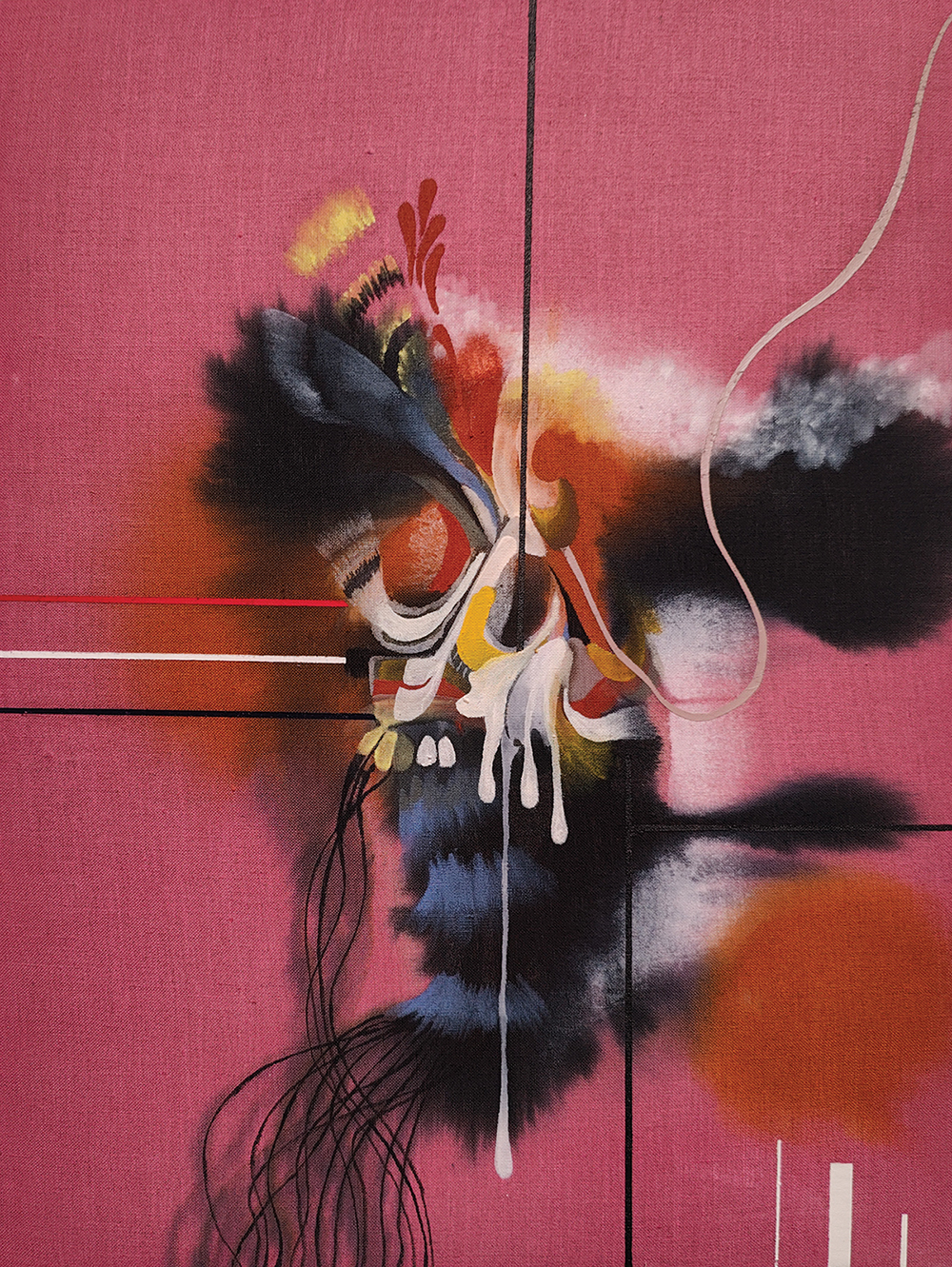
Portrait by Ricardo Tejeda
Asheville’s a long way from Wyoming, but for painter Luke Whitlatch, there’s a common thread that continues to influence his enigmatic work in oil and acrylic. “The landscape and the lack of human damage makes Wyoming a place that’s ripe with stories of the unexplained,” the 46-year-old artist says of his home state.
Wyoming is the least populated state in the country. Meanwhile, North Carolina ranks in the top ten on the other end — it was the ninth most populated state in 2023, according to U.S. News & World Report and other sources.

Nevertheless, Whitlatch, upon moving to Asheville, found a landscape likewise “rich with unexplained natural phenomena.” He says that “looking to the other side has always been the spice of my life … a major influence on my work.”
Whitlatch’s folkloric canvases are informed by a fluid boundary between the quotidian and the landscape of dreams. Bold strokes are interrupted by even bolder — explosive — splashes of color, and the paintings bear mysterious, koan-like titles. “I gather titles in the same way that one looks for a way to explain what it is they think they saw in the woods last night,” he says. “It’s something heard or something seen, or something drawn from an unconscious library. Each painting comes from a different place. Often works are sparked by a specific experience or a story I’ve heard.”

While his early work shows the Native American motifs he grew up with in Casper, Wyoming, his later paintings took on a more contemporary feel, thanks to Whitlatch’s years spent in Los Angeles, attending Otis College of Art and Design. “The transition was a formidable one,” he admits. “Wyoming’s lack of modern-art knowledge made my time at art school in Los Angeles harrowing.”
He says his experience there was also “amazing.” But while he was busy sharpening his technical skills on the West Coast, Whitlatch felt something was missing. “I didn’t understand how much I missed the expansive space for tall tales until I lived in a big city. Major metropolises crush this idea of the natural unknown and cater to the sketchiness of human behavior.”

From inspiration to canvas, unpredictability is just part of his process. “I like to toy around with what comes from the artist’s hand and what may or may not be a mistake,” says Whitlatch. “The process mirrors the idea of the broken language of a story that’s been told more than once. Each time a story is told, it changes its stripes to make it more exciting or entertaining.”

To further obscure the underlying framework of a painting, he often uses dyes as a base layer before adding acrylic and completing the piece with a final layer in oil. “I often go back in after the first pass and fake dimension by tucking layers of each medium under each other,” the painter reveals. “Surface is very important to me, and the tactile experience is often shrouded in tricks.”

Whitlatch’s work appears in conversation this summer with that of his longtime painting partner and sometime bandmate Faris McReynolds, in a joint show at Asheville’s Tracey Morgan Gallery. “I’m looking forward to seeing the [paintings] next to each other,” Whitlatch says. “We both have a very different way that we go about making work, but there’s a common soul to the intention. … I’m constantly on a quest to experience and listen.”
Echo These Words to Strangers, with two-dozen works by Luke Whitlatch and Faris McReynolds, runs through Saturday, July 27, at Tracey Morgan Gallery, 22 London Road, Asheville, traceymorgangallery.com. See also lukewhitlatchart.com.